
Imagine, while you’re out on a trail run or taking on a tough hiking route, being able to strap on a high-tech hip-based harness that can deliver you the power of a horse to charge up steep accents and across even the trickiest terrain.
Sounds similar to something from a James Cameron movie, like a precursor of the Amplified Mobility Platforms used in Avatar, but science fiction often becomes science fact, and Hypershell have developed an exoskeleton they promise is capable of delivering all of the above and more.
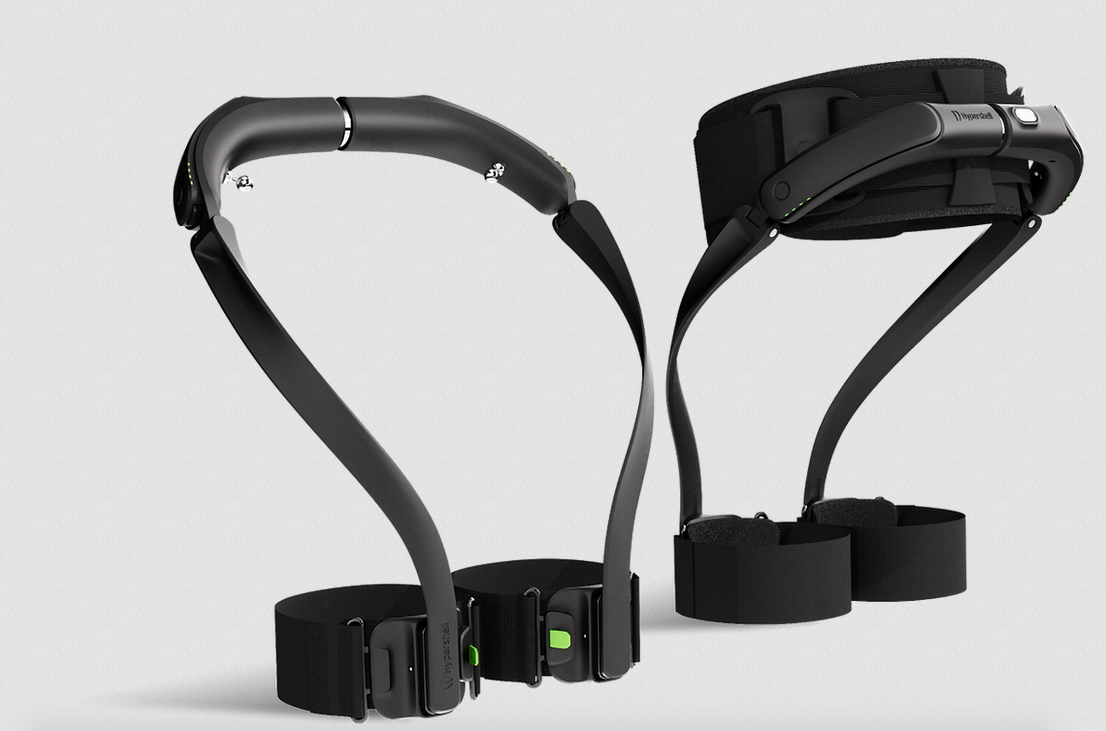
The one-size Hypershell harness can be adjusted to fit various hip dimensions and to incorporate various types of outdoor clothing
One step beyond
The 1-horsepower Hypershell Omega exoskeleton weighs 1.8kg but effectively offsets 30kg of weight as it powers runners, scramblers and ramblers over vertiginous landscapes at speeds of up to 12mph/20kmph. According to the designers of the unit, when used in ‘Hyper mode’, the Hypershell provides up to 20 times more power output than the average body employs while running or hiking.
Powered by rechargeable 18650 lithium batteries and a specially developed M-one motor, the Hypershell has an in-use range of 16 miles (25.75km), but you don’t have to wear it constantly because, with a carrying volume of 6.5L, it folds down and fits into most backpacks. The lightweight alloy frame is weatherproof, rated to IP54 (so not submergible, but rain resistant).
- Exoskeletons are all well and good, but you still need the best trail running shoes available
- Or, indeed, the best hiking boots or best walking shoes
- Also, check out the best hiking backpacks around
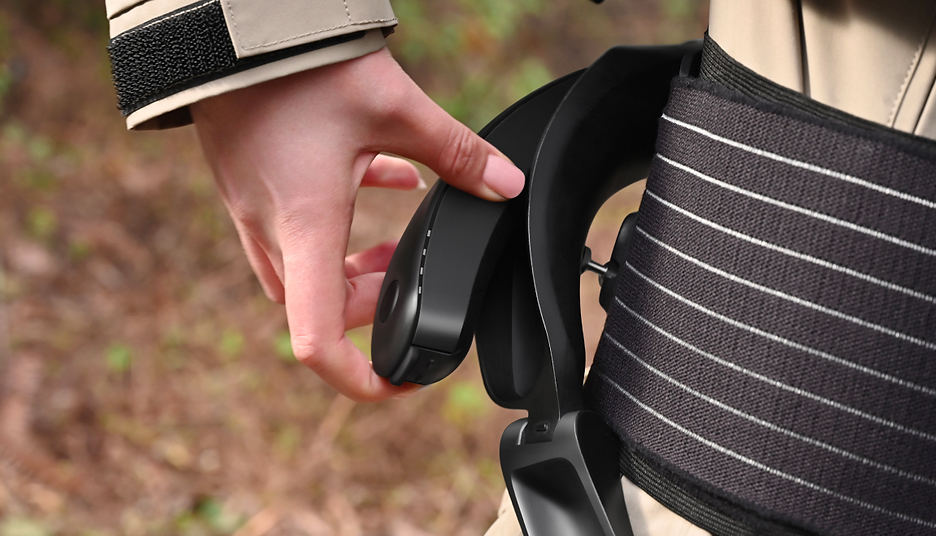
The Hypershell Omega is powered by rechargeable 18650 lithium batteries
Where running meets robotics
Manufacturers say the AI-equipped smart unit actually learns how you move in various scenarios and then calculates the optimal output required to assist you to travel faster, automatically toggling through 9 settings to smoothly adjust your power-assisted speed up to 12mph.
Using ‘Adaptive Motion Recognition’, the Hypershell can analyse nine different postures at a rate of 200 times per second, and then, using its AI dynamic adaptive engine, the product recognises and switches between suitable modes during the activity. Effectively, once you switch it on and start moving, you have a co-pilot helping you adjust your speed.
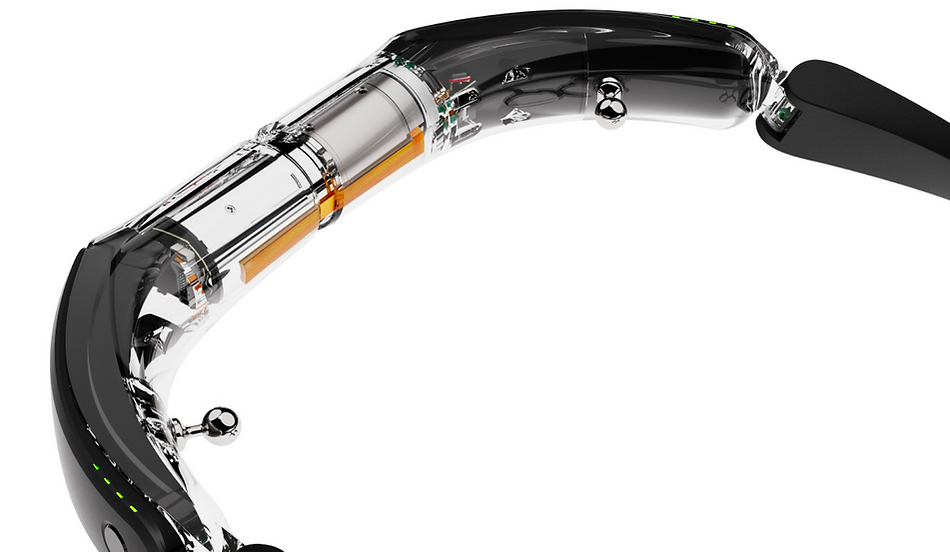
The M-one motor employed by the Hypershell Omega has been specially developed for high-performance wearable robot tech
Hypershell Omega exoskeleton specifications
- Dimensions: Length 510mm, Width 400mm, Height 50mm
- Net Weight: about 1800g with two batteries
- Power: The Hypershell uses rechargeable and replaceable 18650 lithium batteries with a charge cycle of over 800 times
- Maximum step speed: about 20km/h (12.4mph)
- Motor-rated power: 800W
- Integrated range: about 25km (16 miles)
- Operating temperature: -10℃ to 45℃
- Weatherproof level: IP54
Is this the start of a e-running revolution?
The potential applications for the Hypershell exoskeleton are broad. There are clear potential benefits for trail runners, hikers, climbers, backpackers and travellers who want some extra assistance to go further and explore more, but also for people with limited mobility and professionals such as photographers and outdoor medics who need to carry heavy gear across challenging terrain, often at speed.
Sign up to the T3 newsletter for smarter living straight to your inbox
Get all the latest news, reviews, deals and buying guides on gorgeous tech, home and active products from the T3 experts
But, in a recreational setting, is it cheating? Well, the same was said about the best e-bikes when they were first developed, but now there’s a massive market for them alongside standard bikes. People will choose how and where to effectively and ethically use such technical assistance, but it might well give Strava moderators a few headaches if speed ascent records suddenly start to tumble.
We're certainly itching to put the Hypershell exoskeleton through its paces - or rather, for it to put us through our paces. Watch this space. The unit has attracted £100k in funding on Kickstarter so far and is expected to retail at between US$299 and US$599, depending on the model selected.

Author of Caving, Canyoning, Coasteering…, a recently released book about all kinds of outdoor adventures around Britain, Pat Kinsella has been writing about outdoor pursuits and adventure sports for two decades. In pursuit of stories he’s canoed Canada’s Yukon River, climbed Mont Blanc and Kilimanjaro, skied and mountain biked across the Norwegian Alps, run ultras across the roof of Mauritius and through the hills of the Himalayas, and set short-lived speed records for trail-running Australia’s highest peaks and New Zealand’s nine Great Walks. A former editor of several Australian magazines he’s a longtime contributor to publications including Sidetracked, Outdoor, National Geographic Traveller, Trail Running, The Great Outdoors, Outdoor Fitness and Adventure Travel, and a regular writer for Lonely Planet (for whom he compiled, edited and co-wrote the Atlas of Adventure, a guide to outdoor pursuits around the globe). He’s authored guides to exploring the coastline and countryside of Devon and Dorset, and recently wrote a book about pub walks. Follow Pat's adventures on Strava and instagram.
-
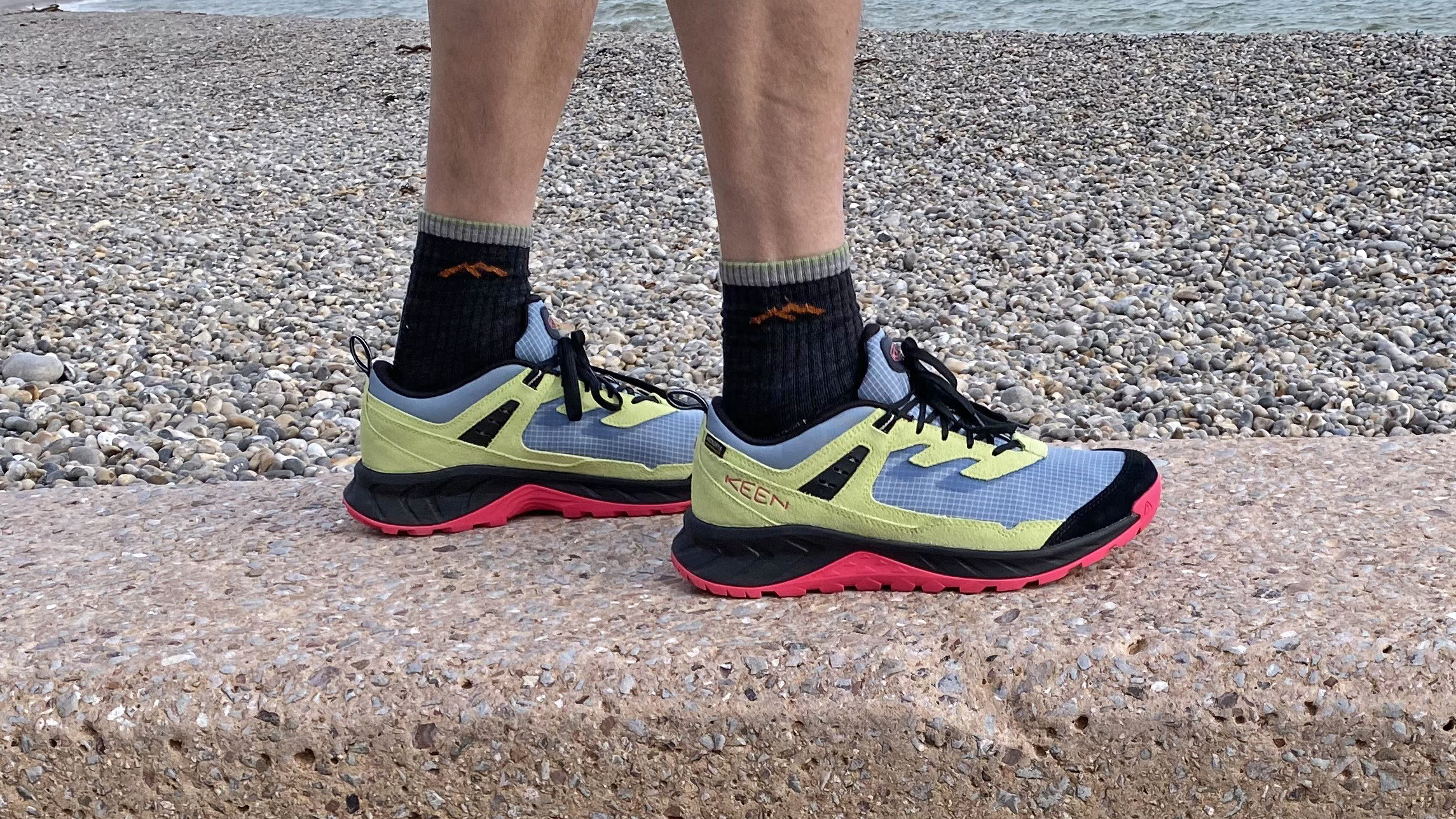 Keen Hightrail EXP Waterproof Hiking Shoes review: grippy, slipper-comfy hiking hooves for 3-season saunters on the wildside
Keen Hightrail EXP Waterproof Hiking Shoes review: grippy, slipper-comfy hiking hooves for 3-season saunters on the wildsideLightweight, robust and waterproof walking shoes for all-conditions clambering, scrambling and trekking escapades (just don’t aim too high)
By Pat Kinsella
-
 3 hamstring stretches every runner should be doing
3 hamstring stretches every runner should be doingIf you’re a runner, these moves should be a given
By Lucy Miller
-
 5 last-minute marathon tips from an athletics champion to help you race like a pro
5 last-minute marathon tips from an athletics champion to help you race like a proEuropean Silver Medalist Holly Archer shares some words of wisdom to make your 26.2 mile journey a good one
By Bryony Firth-Bernard
-
 5 outdated running myths that you need to stop believing, say these experts
5 outdated running myths that you need to stop believing, say these expertsPut them in the bin, forget them!
By Bryony Firth-Bernard
-
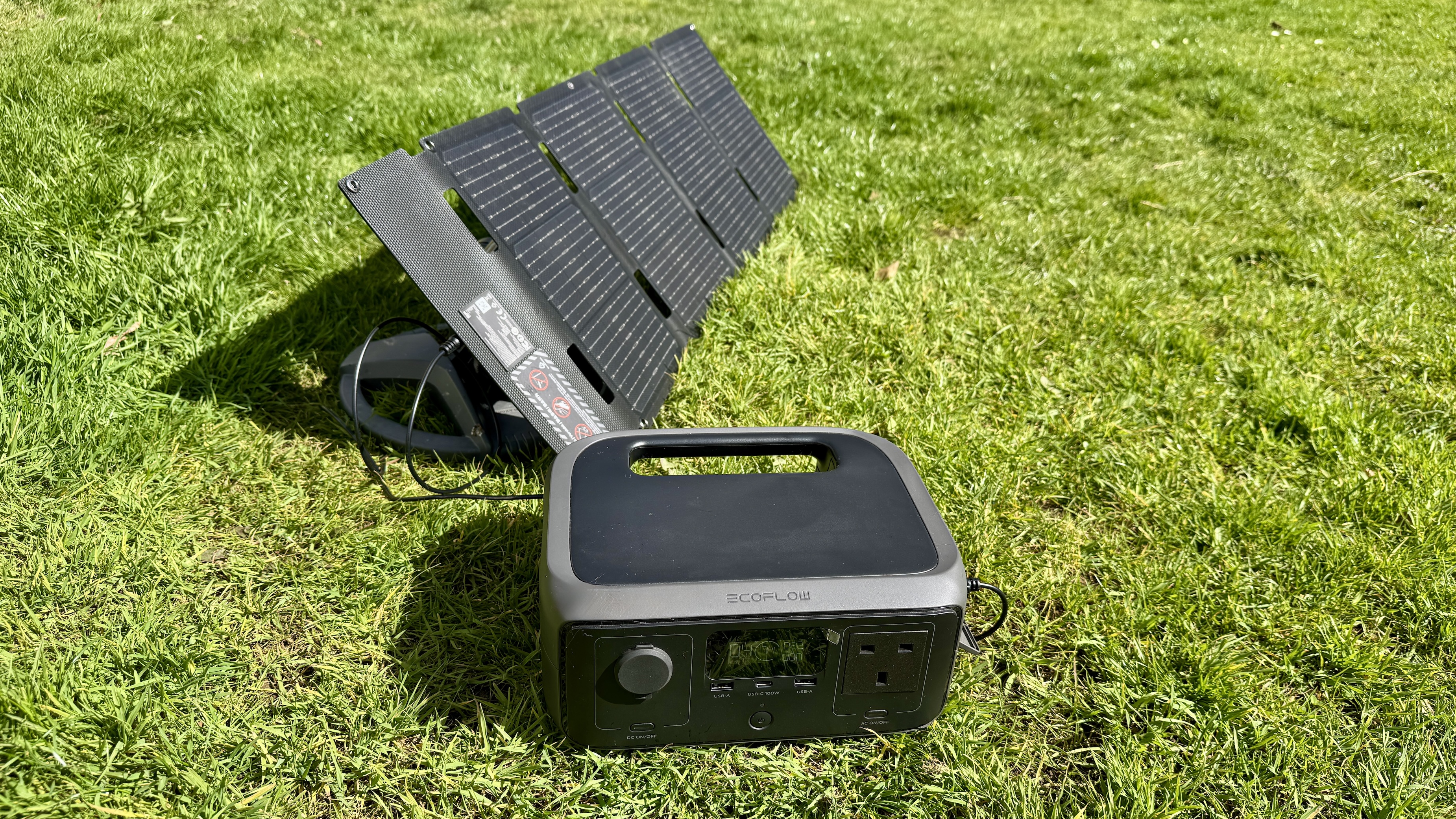 EcoFlow River 3 UPS review: Downsizing power without compromise
EcoFlow River 3 UPS review: Downsizing power without compromiseKeep the juice flowing with EcoFlow’s latest travel buddy
By Derek Adams
-
 The AeroPress Go Plus is the gadget I need for my next outdoor adventure
The AeroPress Go Plus is the gadget I need for my next outdoor adventureWhether you’re off camping or heading on a hike, the new AeroPress Go Plus lets you enjoy great coffee on the go
By Bryony Firth-Bernard
-
 5 essential items every hiker should have in their backpack, according to a Mountain Rescuer
5 essential items every hiker should have in their backpack, according to a Mountain RescuerWhether you’re embarking on a quick hike or a long trek, these essentials can be invaluable
By Bryony Firth-Bernard
-
 YETI has discounted a ton of its best-selling coolers and tumblers in Amazon’s Big Spring Sale
YETI has discounted a ton of its best-selling coolers and tumblers in Amazon’s Big Spring SaleJust in time for the warmer months
By Bryony Firth-Bernard

